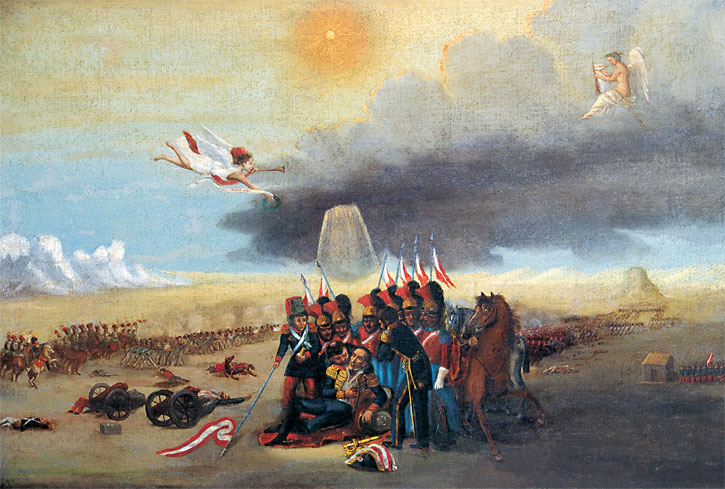|
Nasa Puqi
Nasa Puqi (Aymara ''nasa'' nose, ''puqi'' crumb, "nose crumb", also spelled ''Nasa Poke'') is a mountain in the Andes in Bolivia. It is located in the Chilla-Kimsa Chata mountain range south-east of Wiñaymarka Lake, the southern part of Lake Titicaca. It lies in the La Paz Department, Ingavi Province, Tiwanaku Municipality. Nasa Puqi is situated north of the mountains Chuqi Ch'iwani and Kimsa Chata. See also * Tiwanaku River Tiwanaku River (also spelled ''Tiwanacu'') or Wakira River (Aymara, hispanicized ''Cuaquira, Guaquira'') is a Bolivian river southeast of Lake Titicaca in the La Paz Department, Ingavi Province, in the municipalities of Guaqui and Tiwanaku, and ... References Mountains of La Paz Department (Bolivia) {{LaPazBO-geo-stub ... [...More Info...] [...Related Items...] OR: [Wikipedia] [Google] [Baidu] |
Bolivia
, image_flag = Bandera de Bolivia (Estado).svg , flag_alt = Horizontal tricolor (red, yellow, and green from top to bottom) with the coat of arms of Bolivia in the center , flag_alt2 = 7 × 7 square patchwork with the (top left to bottom right) diagonals forming colored stripes (green, blue, purple, red, orange, yellow, white, green, blue, purple, red, orange, yellow, from top right to bottom left) , other_symbol = , other_symbol_type = Dual flag: , image_coat = Escudo de Bolivia.svg , national_anthem = " National Anthem of Bolivia" , image_map = BOL orthographic.svg , map_width = 220px , alt_map = , image_map2 = , alt_map2 = , map_caption = , capital = La Paz Sucre , largest_city = , official_languages = Spanish , languages_type = Co-official languages , languages ... [...More Info...] [...Related Items...] OR: [Wikipedia] [Google] [Baidu] |
La Paz Department (Bolivia)
The La Paz Department of Bolivia comprises with a 2012 census population of 2,706,359 inhabitants. It is situated at the western border of Bolivia, sharing Lake Titicaca with adjacent Peru. It contains the '' Cordillera Real'', which reaches altitudes of . Northeast of the Cordillera Real are the ''Yungas'', the steep eastern slopes of the Andes Mountains that make the transition to the Amazon River basin to the northeast. The capital of the department is the city of La Paz and is the administrative city and seat of government/national capital of Bolivia. Provinces The Department of La Paz is divided into 20 provinces (''provincias'') which are further subdivided into 85 municipalities (''municipios'') and - on the fourth level - into cantons. The provinces with their capitals are: Government The chief executive office of Bolivia's departments (since May 2010) is the Governor; before then, the office was called the Prefect, and until 2006 the prefect was appointed by ... [...More Info...] [...Related Items...] OR: [Wikipedia] [Google] [Baidu] |
Ingavi Province
Ingavi is a province in the La Paz Department in Bolivia. This is where the Battle of Ingavi occurred on November 18, 1841 and where the World Heritage Site of Tiwanaku is situated. During the presidency of Eliodoro Villazón the province was founded on December 16, 1909 with Viacha as its capital. Geography Ingavi lies on the southern shore of Lake Titicaca. The Chilla-Kimsa Chata mountain range traverses the province. Some of the highest mountains of the province are listed below: Subdivision Ingavi Province is divided into seven municipalities which are partly further subdivided into cantons. Population The people are predominantly indigenous citizens of Aymara descent. Tourist attractions Some of the tourist attractions of the municipalities are: Touri ... [...More Info...] [...Related Items...] OR: [Wikipedia] [Google] [Baidu] |
Andes
The Andes, Andes Mountains or Andean Mountains (; ) are the longest continental mountain range in the world, forming a continuous highland along the western edge of South America. The range is long, wide (widest between 18°S – 20°S latitude), and has an average height of about . The Andes extend from north to south through seven South American countries: Venezuela, Colombia, Ecuador, Peru, Bolivia, Chile, and Argentina. Along their length, the Andes are split into several ranges, separated by intermediate depressions. The Andes are the location of several high plateaus—some of which host major cities such as Quito, Bogotá, Cali, Arequipa, Medellín, Bucaramanga, Sucre, Mérida, El Alto and La Paz. The Altiplano plateau is the world's second-highest after the Tibetan plateau. These ranges are in turn grouped into three major divisions based on climate: the Tropical Andes, the Dry Andes, and the Wet Andes. The Andes Mountains are the highest m ... [...More Info...] [...Related Items...] OR: [Wikipedia] [Google] [Baidu] |
Chilla-Kimsa Chata Mountain Range
The Chilla-Kimsa Chata mountain range (also spelled Kimsachata, Aymara and Quechua ''kimsa'' three, Pukina ''chata'' mountain, "three mountains", Hispanicized spellings ''Quimsachata, Quimsa Chata'') is situated in Bolivia south east of Wiñaymarka Lake, the southern part of Lake Titicaca, in the La Paz Department, Ingavi Province. The range is named after one of highest mountains, the Kimsa Chata complex rising up to about 15 km south of Tiwanaku Tiwanaku ( es, Tiahuanaco or ) is a Pre-Columbian archaeological site in western Bolivia near Lake Titicaca, about 70 kilometers from La Paz, and it is one of the largest sites in South America. Surface remains currently cover around 4 square kilo .... The range stretches from north to south-east almost parallel to the Taraco range north of it. Wakira River flows through the valley between the two ranges and Jach'a Jawira flows along its southern slopes. Mountains Some of the highest elevations of the range are listed ... [...More Info...] [...Related Items...] OR: [Wikipedia] [Google] [Baidu] |
Aymara Language
Aymara (; also ) is an Aymaran language spoken by the Aymara people of the Bolivian Andes. It is one of only a handful of Native American languages with over one million speakers.The other native American languages with more than one million speakers are Nahuatl, Quechua languages, and Guaraní. Aymara, along with Spanish and Quechua, is an official language in Bolivia and Peru. It is also spoken, to a much lesser extent, by some communities in northern Chile, where it is a recognized minority language. Some linguists have claimed that Aymara is related to its more widely spoken neighbor, Quechua. That claim, however, is disputed. Although there are indeed similarities, like the nearly identical phonologies, the majority position among linguists today is that the similarities are better explained as areal features rising from prolonged cohabitation, rather than natural genealogical changes that would stem from a common protolanguage. Aymara is an agglutinating and, to a cert ... [...More Info...] [...Related Items...] OR: [Wikipedia] [Google] [Baidu] |
Bread Crumbs
Bread crumbs or breadcrumbs (regional variants including breading and crispies) consist of crumbled bread of various dryness, sometimes with seasonings added, used for breading or crumbing foods, topping casseroles, stuffing poultry, thickening stews, adding inexpensive bulk to soups, meatloaves and similar foods, and making a crisp and crunchy covering for fried foods, especially breaded cutlets like tonkatsu and schnitzel. The Japanese variety of bread crumbs is called ''panko''. Types Dry Dry breadcrumbs are made from dry breads which have been baked or toasted to remove most remaining moisture, and may have a sandy or even powdery texture. Bread crumbs are most easily produced by pulverizing slices of bread in a food processor, using a steel blade to make coarse crumbs, or a grating blade to make fine crumbs. A grater or similar tool will also do. Fresh The breads used to make soft or fresh bread crumbs are not quite as dry, so the crumbs are larger and produce a soft ... [...More Info...] [...Related Items...] OR: [Wikipedia] [Google] [Baidu] |
Lake Titicaca
Lake Titicaca (; es, Lago Titicaca ; qu, Titiqaqa Qucha) is a large freshwater lake in the Andes mountains on the border of Bolivia and Peru. It is often called the highest navigable lake in the world. By volume of water and by surface area, it is also the largest lake in South America.Grove, M. J., P. A. Baker, S. L. Cross, C. A. Rigsby and G. O. Seltzer 2003 Application of Strontium Isotopes to Understanding the Hydrology and Paleohydrology of the Altiplano, Bolivia-Peru. ''Palaeogeography, Palaeoclimatology, Palaeoecology'' 194:281-297. Lake Titicaca has a surface elevation of . The "highest lake" claim is generally considered to refer to commercial craft. Numerous smaller bodies of water (that are not considered lakes) around the world are at higher elevations. For many years, the largest vessel afloat on the lake was the 2,200-ton (2,425 U.S. tons), SS ''Ollanta''. Today, the largest vessel is most likely the similarly sized train barge/float ''Manco Capac'', operated ... [...More Info...] [...Related Items...] OR: [Wikipedia] [Google] [Baidu] |
Tiwanaku Municipality
Tiwanaku Municipality is the third municipal section of the Ingavi Province in the La Paz Department, Bolivia. Its seat is the village of Tiwanaku located near the UNESCO World Heritage Site Tiwanaku. Cantons The municipality is divided into three cantons. They are (their seats in parentheses): * Huacullani - ( Huacullani) * Pillapi San Agustín - (Pillapi San Agustín) * Tiwanaku - (Tiwanaku village) The people The people are predominantly indigenous citizens of Aymara descent. Some data: Languages The languages spoken in the Tiwanaku Municipality are mainly Aymara and Spanish. Tourist attractions Some of the tourist attractions of the municipality are: Tourist guide by the government of the department * the archaeological site of |
Chuqi Ch'iwani
Chuqi Ch'iwani (Aymara ''chuqi'' gold, ''ch'iwa'' edible, cooked leaves, ''-ni'' a suffix to indicate ownership, Hispanicized spelling ''Choque Chihuani'') is a mountain in the Chilla-Kimsa Chata mountain range in the Andes of Bolivia. It lies south-east of Wiñaymarka Lake, the southern part of Lake Titicaca. It is located in the La Paz Department, Ingavi Province, at the border of the Jesús de Machaca Municipality and the Tiwanaku Municipality. Chuqi Ch'iwani is situated south of the mountains Nasa Puqi and Kimsa Chata. See also * Tiwanaku River Tiwanaku River (also spelled ''Tiwanacu'') or Wakira River (Aymara, hispanicized ''Cuaquira, Guaquira'') is a Bolivian river southeast of Lake Titicaca in the La Paz Department, Ingavi Province, in the municipalities of Guaqui and Tiwanaku, and ... References Mountains of La Paz Department (Bolivia) {{LaPazBO-geo-stub ... [...More Info...] [...Related Items...] OR: [Wikipedia] [Google] [Baidu] |
Kimsa Chata (Ingavi)
Kimsa Chata, also spelled Kimsachata, (Aymara and Quechua ''kimsa'' three, Pukina ''chata'' mountain, "three mountains", Hispanicized spellings ''Quimsachata, Quimsa Chata'') is a mountain in the Andes in Bolivia. It is located in the Chilla-Kimsa Chata mountain range south-east of Wiñaymarka Lake, the southern part of Lake Titicaca. It lies in the La Paz Department, Ingavi Province, Tiwanaku Municipality, about 15 km south of the archaeological site of Tiwanaku and the village of the same name. Kimsa Chata is situated between the mountains Nasa Puqi in the north and Chuqi Ch'iwani in the south.Bolivian IGM map 1:50,000 Tiahuanacu 5844-II Kimsa Chata is a ceremonial and sacred mountain of the Aymara people. Preparan ofrenda para la montaña sagrada Kimsa Chata de Tiwanaku (Spanish) This is also where the Aymara [...More Info...] [...Related Items...] OR: [Wikipedia] [Google] [Baidu] |

.jpg)

